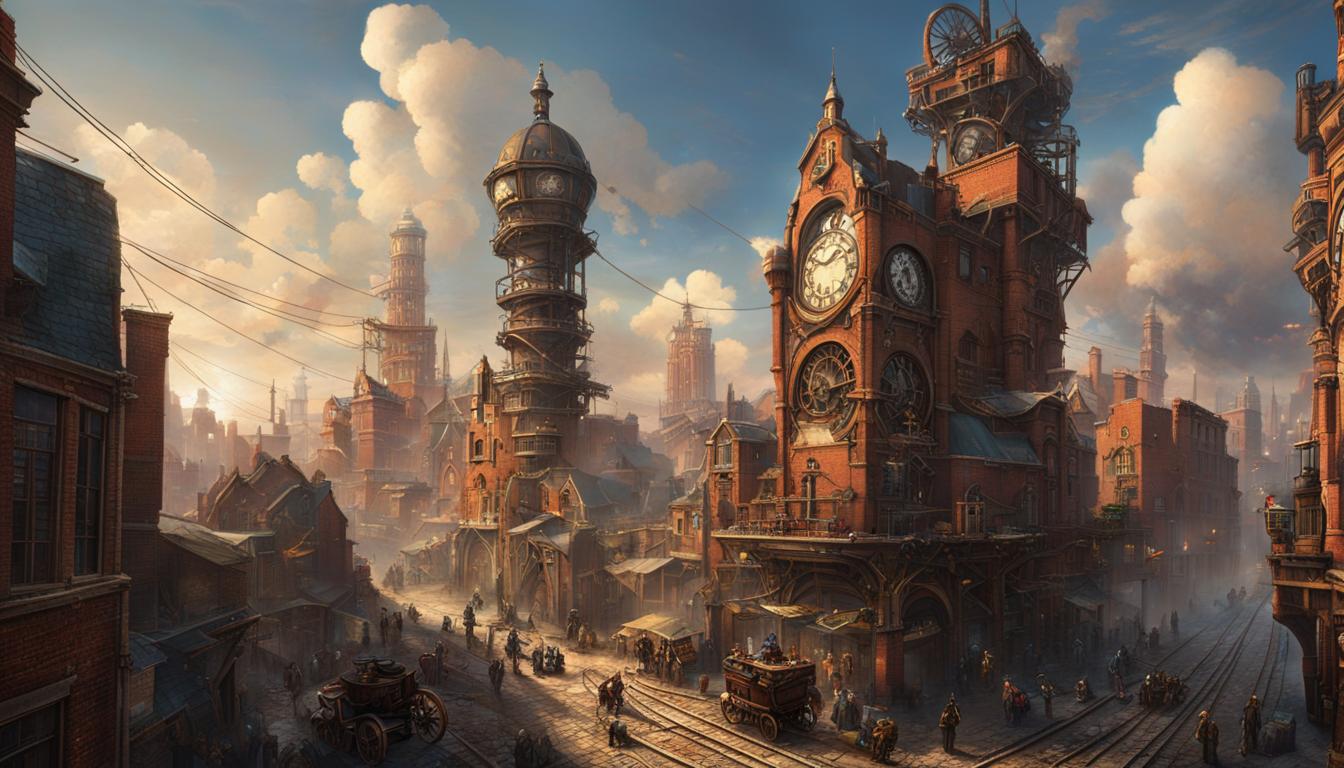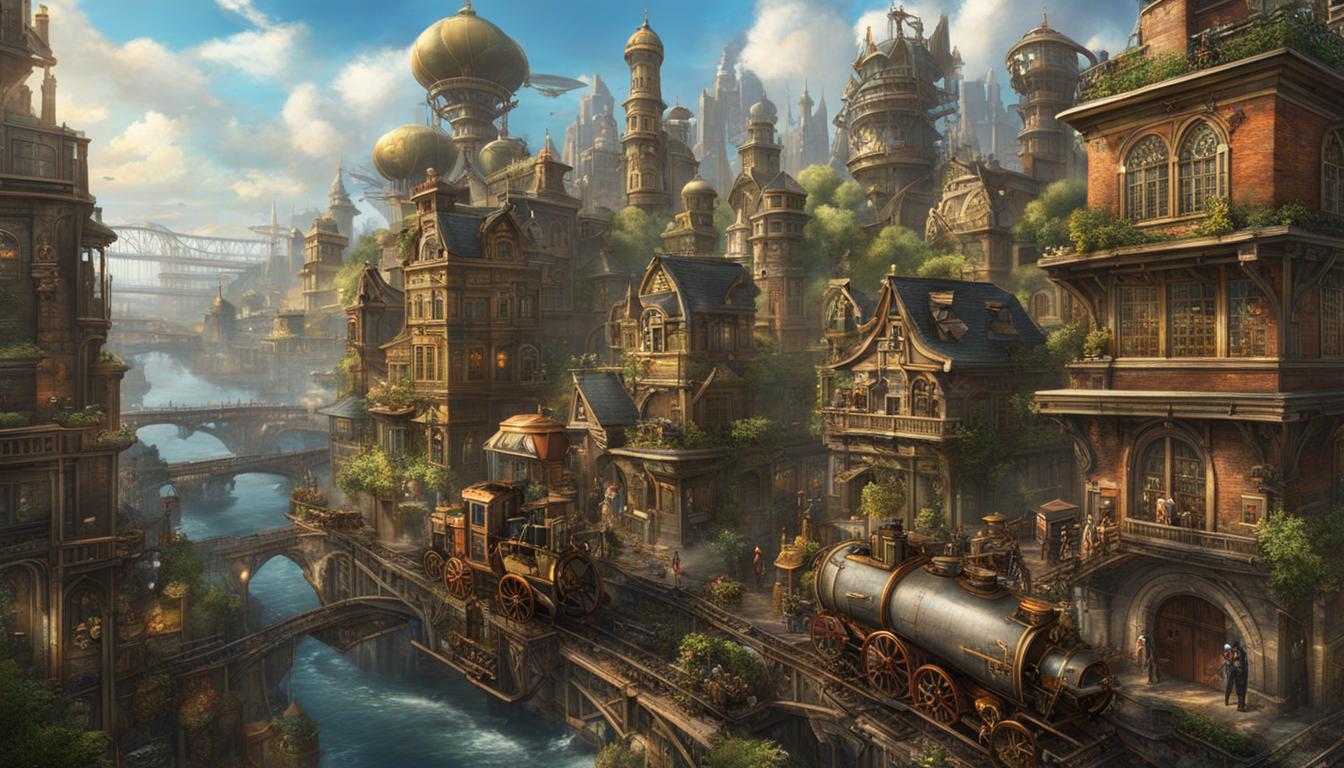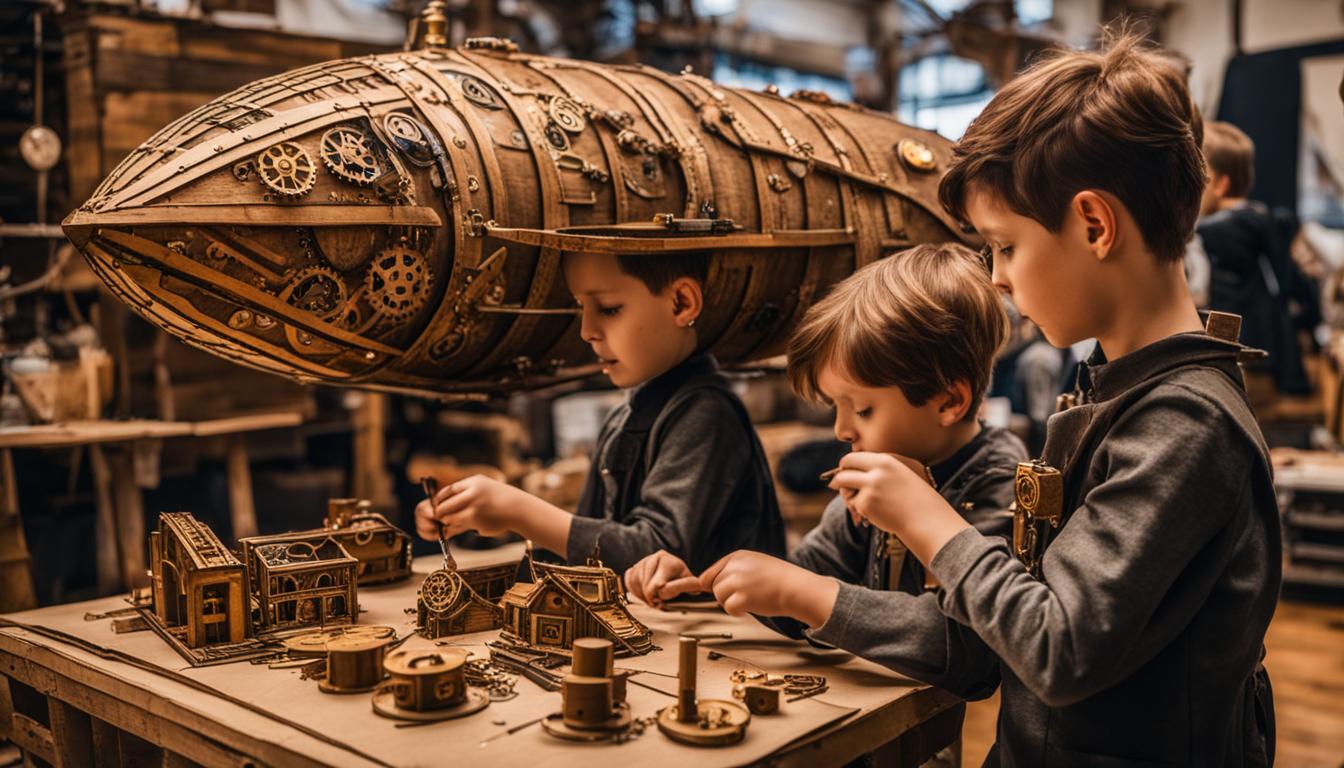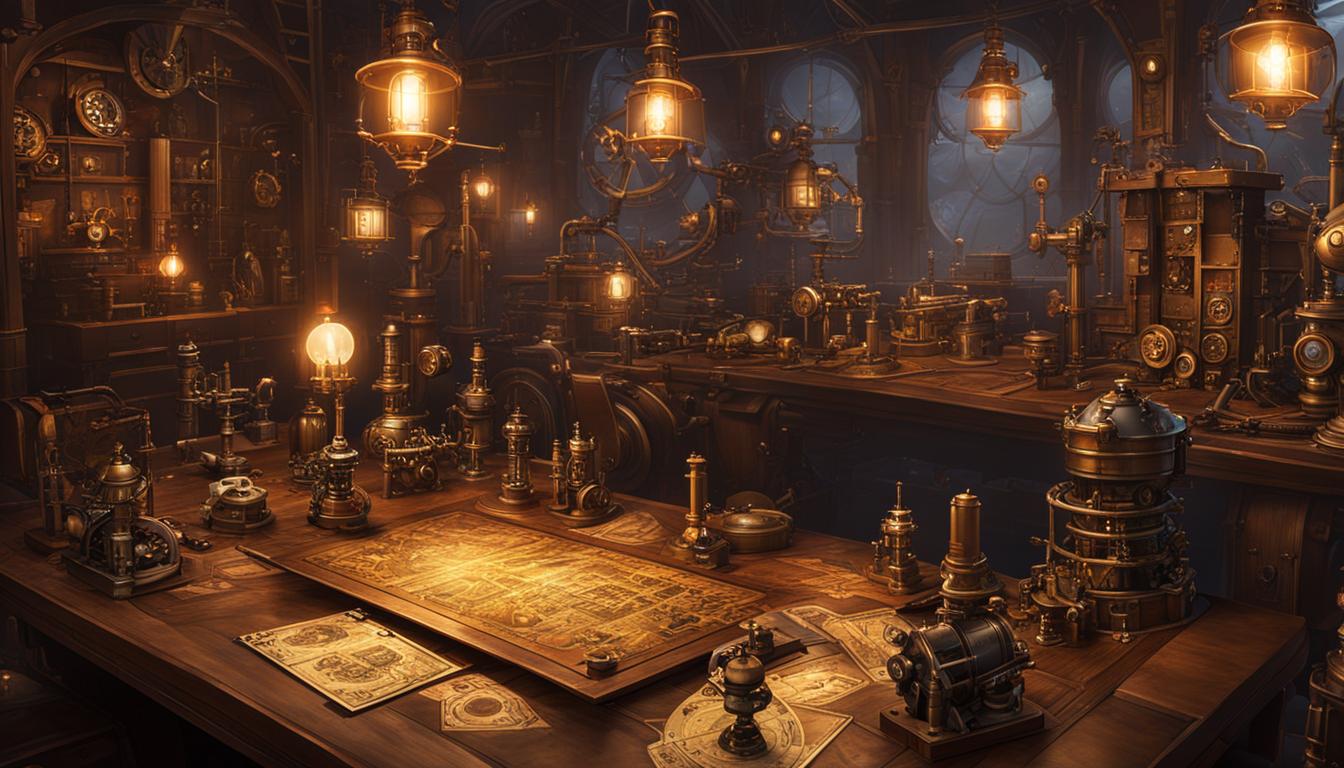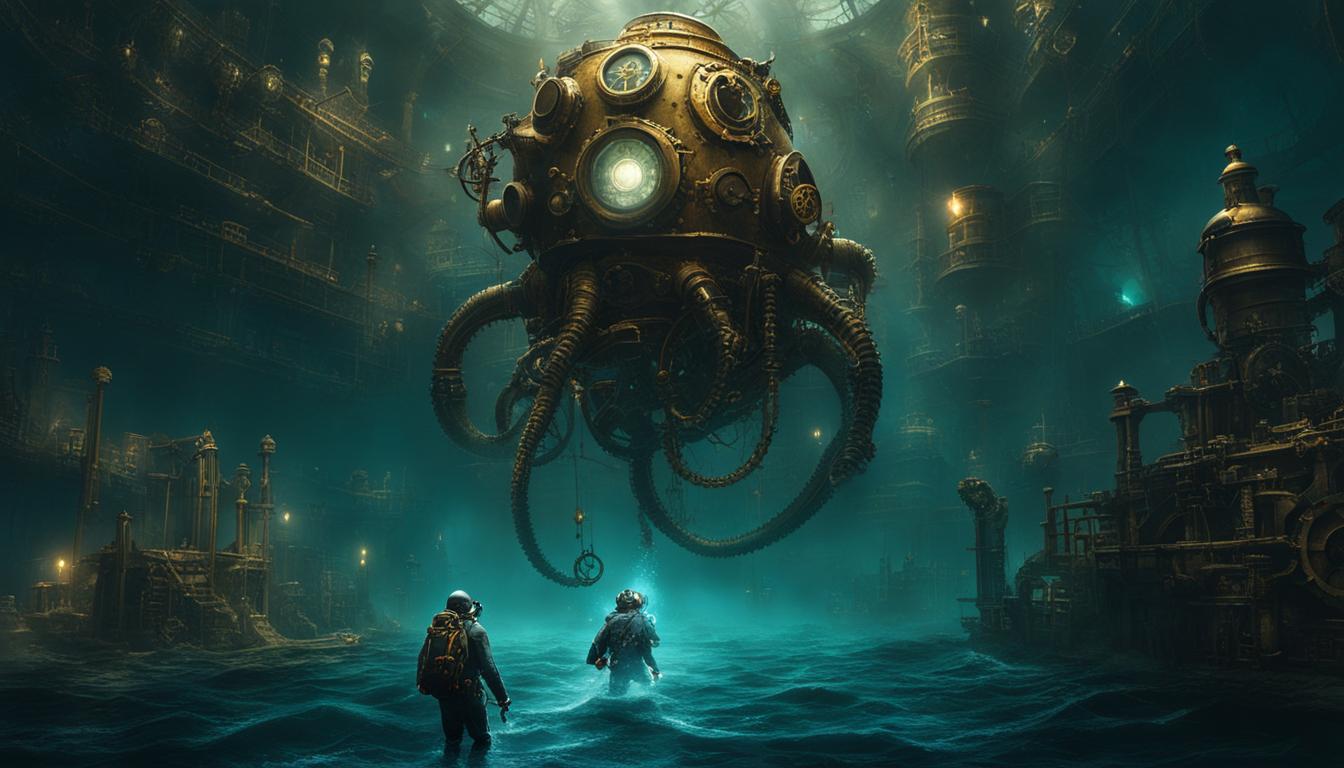When it comes to crafting a captivating steampunk world, the key is finding the delicate balance between imagination and authenticity. While the characters and plot are undoubtedly the heart of your story, the world they inhabit can bring a sense of wonder and intrigue that keeps readers spellbound. In this article, we will explore the essential techniques and tips for designing mesmerizing steampunk settings, from crafting landscapes to designing cities.
As you embark on the journey of steampunk world-building, remember that your primary focus should always be on the development of engaging characters and a compelling plot. The world you create should serve as a backdrop that enhances the narrative and adds depth to the story. While historical accuracy and societal issues are essential to consider, they should be integrated in a way that contributes to the overall cohesion of your steampunk world.
Steampunk settings often thrive on the interplay between technology and society. By incorporating themes such as class stratifications, gender roles, and racial relations, you can create a steampunk world that feels authentic and rich in detail. Additionally, be mindful of how technology is utilized in your world, ensuring it adds substance to your narrative rather than becoming a mere gimmick.
Key Takeaways:
- Focus on developing strong and engaging characters that fit seamlessly into your steampunk setting.
- Ensure that your steampunk world serves a purpose and contributes to the overall narrative.
- Integrate historical accuracy and societal issues in a way that adds depth and realism to your setting.
- Consider the interplay between technology and society, using it to drive your story forward.
- Be consistent in your usage of technology, avoiding inconsistencies that may detract from the immersion.
Defining Your Steampunk World
When diving into the world-building process of steampunk, it is essential to understand the unique elements that define this genre. Begin by exploring what attracts you to steampunk and identify the aspects you want to share with your readers. These personal insights will serve as the foundation for your campaign or story, guiding you in crafting an authentic and captivating steampunk world.
Finding a system that aligns with your vision is another crucial aspect of steampunk world-building. While Dungeons & Dragons is a popular choice, there are other steampunk-specific systems available that may suit your needs better. Consider exploring options such as Privateer Press’ Iron Kingdoms, R. Talsorian Games’ Castle Falkenstein, and Arc Dream Publishing’s The Kerberos Club. These systems provide comprehensive tools and mechanics tailored specifically for steampunk environments, offering an immersive experience for both players and storytellers.
To truly breathe life into your steampunk world, it is essential to incorporate the unique aspects that make steampunk so captivating. One of these aspects is the power of steam. Consider the profound impact steam technology has on every aspect of your world, from transportation to industrial machinery and even the behavior of wildlife. Embrace the opportunities presented by steam-powered technology and let it shape the very fabric of your setting, enriching your narrative and providing endless possibilities for adventure.
Table: Steampunk World Creation Systems
| System | Description |
|---|---|
| Iron Kingdoms | A steampunk fantasy setting with a focus on warfare, exploration, and political intrigue. The system utilizes a unique blend of magic and technology. |
| Castle Falkenstein | A Victorian-era steampunk setting where players take on the roles of adventurers navigating a world infused with magic and advanced steam-powered technology. |
| The Kerberos Club | A steampunk superhero setting that combines Victorian-era aesthetics with the emergence of superhuman abilities. The system allows players to create unique characters with extraordinary powers. |
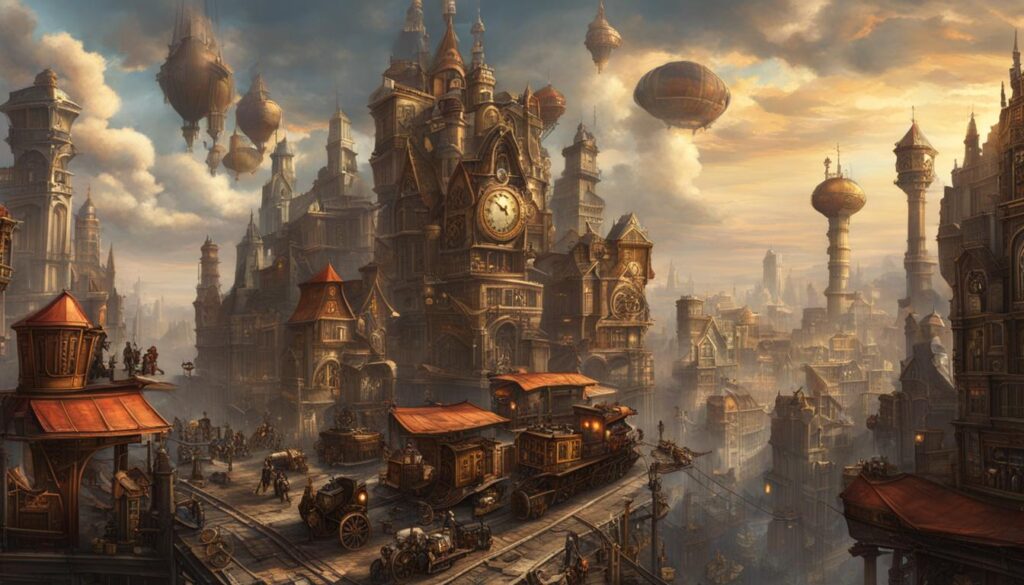
By defining the core elements of steampunk, choosing a suitable system, and incorporating the power of steam, you can create a vibrant and immersive world for your steampunk narrative. Continue exploring the depths of steampunk world-building, as the next section will delve into developing characters and plot within the steampunk setting, ensuring a cohesive and captivating storytelling experience.
Developing Characters and Plot in a Steampunk World
In a steampunk world, the development of characters is crucial to creating an immersive and engaging narrative. When crafting characters for your steampunk setting, it is important to consider how they fit within the society and the unique elements of the genre. One key aspect to focus on is the clothing of your characters. The steampunk aesthetic often blends Victorian fashion with industrial elements, such as gears and goggles. This visual representation can help immerse readers in your world and create a strong connection to the setting.
Avoid falling into clichés and stereotypes when creating your characters. While steampunk draws inspiration from the Victorian era, it is important to add unique elements that make your characters stand out. Consider their personalities, motivations, and backgrounds, and how these factors interact with the steampunk environment. By developing well-rounded characters that navigate the complexities of the world you’ve created, you can enhance the depth and richness of your narrative.
Designing a Steampunk Plot
In addition to developing compelling characters, the plot of your steampunk story should be intricately woven into the setting. The architectural styles of steampunk can play a significant role in driving the actions and decisions of your characters. The fusion of Victorian design with industrial aesthetics creates a visually stunning backdrop for your story. Whether it’s grand, towering skyscrapers adorned with intricate top hats or sprawling underground tunnels bustling with steam-powered machinery, the unique architecture of your steampunk world can have a profound impact on the plot.
Just as the cogs and gears of a well-crafted timepiece work together to keep precise time, the elements of your steampunk world should seamlessly intertwine with the characters and plot, creating a cohesive and immersive experience for your readers.
Consider how the architectural styles reflect the themes and conflicts within your narrative. Does the towering cityscape serve as a metaphor for the social hierarchy and class tensions? Or do the hidden underground passages symbolize the secret organizations operating in the shadows? By incorporating the steampunk architectural styles into your plot, you can elevate the storytelling and take readers on a visually captivating journey.
Conclusion
Building a steampunk world requires a delicate balance of creativity and consistency. By focusing on strong characters and engaging plots, developing a unique setting, and incorporating the key elements of steampunk, you can master the art of steampunk world-building.
To begin, define what sets steampunk apart for you. Explore what aspects of the genre intrigue and captivate your imagination, and use these answers as a foundation for your world-building endeavors.
Next, find a system that aligns with your vision. While Dungeons & Dragons is a popular choice, there are other steampunk-specific systems available that may better suit your needs. Privateer Press’ Iron Kingdoms, R. Talsorian Games’ Castle Falkenstein, and Arc Dream Publishing’s The Kerberos Club are just a few examples to consider.
Lastly, bring your steampunk world to life by infusing it with constant movement and the unique aspects of the genre. Consider the power of steam and how it influences everything, from technology to wildlife. Let your setting inspire and drive the actions and decisions of your characters, creating a captivating and immersive experience for your readers.
FAQ
What is the most important aspect of a steampunk story?
The most crucial aspect of a steampunk story is the characters and plot. While creating a fully-fleshed out world is great, it should always take a back seat to the development of your characters and the progression of your story.
Should I include historical accuracy and societal issues in my steampunk world?
Yes, including themes such as class stratifications, gender roles, and racial relations can add depth and realism to your setting.
How should I utilize technology in my steampunk world?
Be mindful of how technology is utilized in your world. Consider its effects and be consistent in your usage, ensuring it adds depth to your narrative rather than becoming a gimmick.
What sets steampunk apart from other genres?
Steampunk is defined by its unique blend of Victorian aesthetics and industrial elements. It is important to consider what attracts you to steampunk and what you want to share with your readers.
Are there specific steampunk systems I should use for my world-building project?
While Dungeons & Dragons is a popular choice, there are other steampunk-specific systems available such as Iron Kingdoms, Castle Falkenstein, and The Kerberos Club that may suit your needs better.
How can I bring my steampunk world to life?
Incorporating the unique aspects of steampunk, such as the power of steam and its effects on technology and wildlife, can breathe life into your world. Constant movement and incorporating architectural styles of steampunk can also add depth to your setting.
How should I create characters that fit the steampunk society?
Consider the clothing, technology, and societal norms of your steampunk setting. Ensure that your characters’ clothing aligns with the time period and their activities. Avoid clichés and stereotypes, but don’t be afraid to add unique elements that make your characters stand out.
How can I incorporate my steampunk world into the plot?
By incorporating the setting into the story, making it an integral part of the narrative. Consider the architectural styles of steampunk and let the setting inspire and drive the actions and decisions of your characters.
What tips can you give for balancing creativity and consistency in steampunk world-building?
Focus on strong characters and engaging plots while developing a unique setting. Be consistent in your usage of steampunk elements and ensure your characters and plot are influenced by the steampunk setting.
Source Links
- https://www.cbr.com/pro-tips-need-to-know-dming-steampunk-campaign-dungeons-dragons-pathfinder-dnd-tabeltop-rpg-castle-falkenstein/
- https://steampunk.wonderhowto.com/news/8-tips-and-tricks-every-steampunk-writer-should-know-0139158/
- https://www.reddit.com/r/worldbuilding/comments/6vj7mg/steampunk_magic_system/

